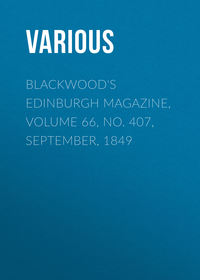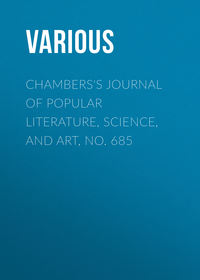 полная версия
полная версияПолная версия
Behind the News: Voices from Goa's Press
The Goan newspaper reader's search for quality has resulted in Tarun Bharat, for long published from Belgaum, becoming the state's highest-read daily, pushing even the market leader Gomantak to second place.
The success of Tarun Bharat stems from its management's professional approach to journalism. With a wide network of young stringers without any ideological orientation spread across the state, Tarun Bharat provides comprehensive coverage of Goa like no other newspaper sold in the state. Tarun Bharat also ushered in winds of change in the Goan media with supplements and booklets to cater to popular tastes. While cannibalising a large chunk of Gomantak readers, Tarun Bharat also attracted new readers from among the youth and women, thereby revolutionising Marathi journalism.
Gomantak's management never realised the threat posed by Tarun Bharat till it was too late. In my opinion, the Gomantak management's lackadaisical attitude towards its readers worked in favour of Tarun Bharat. For instance, Gomantak's staff strength is higher than Tarun Bharat's, but most of them are concentrated only in Panaji.
Tarun Bharat also invested heavily in news gathering operations. Apart from widening its correspondents' network, the newspaper also equipped them with amenities like fax machines and cameras. Tarun Bharat also set up district-level bureaus and local offices all over the state as a strategy to source local content.
(Tarun Bharat then managed to steam-roll even smaller newspapers like Rashtramat which lost its readership base. Despite the backing of powerful industrialists in Goa, Rashtramat lost out despite its history. The newspaper, which swayed Goan thinkers during the Opinion Poll, failed to instill a sense of professionalism. Rashtramat is now trying to capture lost ground with hard hitting editorials by Sitaram Tengse, besides addition of supplements.)
Gomantak's failure in the face of Tarun Bharat's onslaught is an example of how a market leader can fail by sitting on its laurels. The Gomantak was originally started in Goa to advocate the state's merger with Maharashtra and furthering the cause of the Marathi language. Gomantak owed much of its success to its former editor, Madhav Gadkari. By the own admission, Gadkari gave Gomantak a Hindu face and supported the cause of Marathi through his speeches. Mr Gadkari's enthusiasm, foresight and hard work were instrumental in the growth of Gomantak. The newspaper's circulation shot up from 3000 copies per day to 15,000 copies per day and kept growing. His successor, Narayan Athavale, known for his inimitable style of writing, kept up Gadkari's legacy.
Madhav Gadkari has been always accused of fostering pro-Maharashtra sentiments, fueling the language controversy and creating disharmony between Goa's main Hindu and Catholic communities. Konkani protagonists continue to level these allegations and suspect that Gomantak is still aiming to merge Goa with Maharashtra. Gadkari admitted that he had come to Goa to campaign during 1967 elections. Though initially he was not the editor, he used to write regularly for Gomantak. In all Gadkari spent ten years in Goa.
Despite being labelled an outsider, the Marathi press in Goa owes its professionalism to Gadkari. He turned Gomantak into a platform for the Goan bahujan community. He started the Shiv Jayanti celebrations in Goa and, in his tenure of 10 years, he fought several intellectual and political battles.
To begin with Gadkari was very close to Goa's first chief minister, Dayanand Bandodkar. The relationship proved profitable, with Bandodkar leaking several stories to Gadkari that were published prominently in Gomantak. Later on, the two fell out, and Bandodkar stopped government advertisements to Gomantak. Bandodkar went on to accuse Gadkari and the Gomantak of vitiating communal harmony in Goa, in a complaint to the Press Council of India.
Gadkari believed that in the Vishal Gomantak (a 'greater Goa' state that included within Goa areas outside its current boundaries) he envisaged, the rift between Hindu and Catholic communities in Goa would be solved peacefully.
Gomantak has played a big role in the development of Marathi in Goa, by creating two generations of writers and journalists in the state. In contrast, the Konkani media failed to create an intellectual constituency in the state.
In Sunaparant
During my tenure as editor of Sunaparant, between 1989 and 1995, I strived to inject some amount of professionalism in the newspaper. Unfortunately, I did not receive the needed support from the stalwarts of the Konkani movement. They never wanted the Sunaparant to become a professionally-run publication. My efforts faced severe opposition and I personally went through acute stress.
Purshottam Kakodkar, Uday Bhembre and his group led the movement against me. With the help of Congress politician, and former chief minister, Ravi Naik, they managed to have Uday Bhembre installed as Chief Editor of the daily. Unfortunately, Uday Bhembre never had the time for this newspaper. He just concentrated on how to sabotage my attempts to professionalise the newspaper.
During my tenure, Sunaparant had the best of supplements on Diwali and other occasions. We even managed to bring out special evening editions during Iran-Iraq war. Sunaparant's campaigns during the agitations against the Konkan Railway and Nylon 6,6 projects was followed up by other newspapers in Goa.
We even started a fund raising drive during the 1990 Shiroda canoe disaster and helped restart the ferry service. In addition, more than 20 books compiling different articles, investigative series, fiction and a dictionary was published during my tenure.
Only readers will tell whether during his eight years tenure Uday Bhembre had taken up even a single issue and fought it out till the end. Readers acutely felt the non-professionalism of the product during Bhembre's period.
Bhembre held the position as Chief Editor for eight years later when the newspaper had but lost all its base. Sunaparant is owned by a mine owner and hence protection of corporate interests, rather than the fostering of Konkani, has played a big role in Bhembre's continuation as Chief Editor at Sunaparant.
In the end, Bhembre had to go after running a series of editorials against Chief Minister Manohar Parrikar. Until then, the owners of Sunaparant were oblivious of Bhembre's lethargy, inefficiency and inactivity that took an immense toll on the newspaper. An example: during his tenure, Bhembre failed to call even a single meeting of staff reporters, let alone stringers.
Once again, Dattaraj Salgaocar, owner of Sunaparant, has recently made up his mind to re-build and re-launch the newspaper on a commercial basis. This is a welcome step. Whatever may be the language of newspaper – the language is merely a tool for communication – its success depends on the information provided, in-depth analysis and its commitment to important issues.
In an effort to make Sunaparant a 'mouthpiece' for Konkani, Bhembre seems to have overlooked all these issues. This is precisely why Bhembre had to seek the support of a newspaper like The Navhind Times to counter the likes of Jaisingrao Rane, despite heading Sunaparant himself.
Needless to add, such incidents have proved detrimental to the cause of Konkani. Almost 45 years ago, Konkani protagonists had to depend on the crutches of Marathi newspapers to enhance their cause. The situation is no better today, largely due to the apathetic nature of the leaders of the Konkani movement.
Vital ingredients
In my opinion, the major requirements for a successful daily newspaper are: a state-of-the-art establishment, a steadfast commitment to the reader, comprehensive coverage of all sections of the society, and the ultimate aim of becoming the voice of the Goan populace.
Sadly, all these factors remained low on the priority of Konkani protagonists. Professionalism was never on their agenda. With an eye on the leadership of the Konkani movement, the likes of Bhembre used the newspaper to carry out attacks against all his opponents during the elections to the Konkani Bhasha Mandal.
Bhembre has still not given up. He is now on the advisory board of the soon-to-be-revamped Sunaparant. This move obviously suggests the intention of halting the progress of the restructured newspaper.
When I took over as an Editor of Sunaparant, Uday Bhembre, then editor, was asked to vacate his post. Not surprisingly, this angered Bhembre. Some of his friends, who had been pampered with free publicity, continuously worked against me.
To illustrate how this worked, one can cite here the example of columnist Dilip Borkar whose satirical column "Borkari", on various ills plaguing Goa, gained all-round popularity. Borkar had even even taken humorous digs at me through his writings. But, that apart the column was a masterpiece as regards its content and the lucidity of the language was concerned.
But it hurt a number of people, and added them to my list of enemies. Uday Bhembre, on taking charge as the Editor, stopped this column and replaced it with another one penned by one of his supporters. However it did not find favor with the reader and failed miserably.
Much of my work at Sunaparant – like a supplement on business, in-depth analysis of important events, expert views and analysis by experts in relation to important events, a well compiled Sunday edition – continues with little change.
Dattaraj Salgaocar himself admitted that Sunaparant had become popular with readers, but reactions from politicians made him restless. It may be recalled that Sunaparant had mercilessly attacked Ravi Naik for usurping the chief ministerial gaddi (throne).
Dattaraj, being close to Naik, could not digest this criticism. What seems to have irked Salgaocar was Sunaparant's highlighting, on its front-page, the news of the nomination of Vasant Pilgaonkar (a family friend and close aide-cum-adviser of Ravi Naik) as the Goa Public Service Commission chief.
Strongly retaliating against this, Dattaraj called for a meeting at Pilgaonkar's residence. And Pilgaonkar, at this meeting, lectured me on journalism. A decision to name Uday Bhembre as the Chief Editor was finalised. Interestingly, Bhembre is a relative of Pilgaonkar and close to Ravi Naik.
Bhembre got a dose of his own medicine when Manohar Parrikar took over as chief minister. On realizing that Bhembre refused to toe his line, Parrikar publicly blasted him, and, in turn, Sunaparant. The age-old tradition of industrialists supporting the government came into play here. By the same token, Salgaocar unsurprisingly supported Parrikar.
Most importantly, the group of journalists close to Parrikar is now getting attracted to Sunaparant. According to the grapevine, the government is doling out a largesse of Rs 50 lakhs (five million rupees) by way of advertisement revenue to Sunaparant. How can a newspaper which expects revenue in the form of advertisements from any incumbent government remain loyal to its reader?
I believe, a Konkani daily has to follow an independent line to succeed. It has to protect the interests and self-respect of all Goans. In the process, a newspaper like Sunaparant should not hesitate in stepping on the toes of a section of the Konkani protagonists. Whoever edits the newspaper should realise that a news item killed by Sunaparant would be grabbed by the Marathi and English-language press.
Any sort of defalcation, even if it pertains to the darling of Konkaniwadis meaning the Goa Konkani Academy or Asmitai Pratisthan, should necessarily find an important place in the pages of this newspaper. And that too, before any rival publication vigorously pursues the issue. Various issues like the efficiency of the teaching community, the state of education institutions, or the pathetic condition of Konkani in schools, have to be taken up with missionary zeal. Only a relentless pursuit of such issues will take Sunaparant to the masses.
Lessons to be learnt
It could probably draw on the lessons from the Marathi press . It holds Marathi dear to its heart, without in any way making reference to the Marathi movement. At a time when veteran journalists like Gadkari and Athavale forcefully argued the cause of Marathi, it was done without prejudice to other issues of social and political importance which continued to find place in their newspaper.
Gomantak was always on the forefront in fighting alongside Goans on vital issues that cropped up from time to time. In my opinion, although Tarun Bharat has a greater circulation than its immediate rival Gomantak, I would still give full marks to the latter for its vigorous fighting spirit.
During my involvement in the student agitation, despite it being ideologically oriented towards our policy and mindset, Rashtramat did not entertain us. On the contrary, Gomantak, while holding diametrically opposite views, gave us wide publicity. Further support was found in the editorials. It has been the policy of Rashtramat and Sunaparant to always be on the side of the Establishment.
The roots of the decline of Sunaparant lies precisely in this same policy. It has always given a wide berth to any agitation. Given the fact that Sunaparant is a Konkani daily, it does not necessarily mean that all literature pertaining to and written by Konkani litterateurs has to find a mention in it.
Sunaparant has to nurture, cultivate and discover new journalistic talent. I was instrumental in encouraging Marathi protagonists to write for Sunaparant. As a resultantly, Sunaparant found readers among the supporters of Marathi as well. Such efforts have to be repeated.
To live long, Sunaparant has to sell. The issues highlighted by the newspaper have to be discussed, and a conducive atmosphere in favor of the newspaper needs to be created. Is this too much to expect?
Chapter 18: Romi Konkani, hanging on a cliff
Peter Rapose considers himself "just a five-year-old priest" given the responsibility of editing a seventy-year-old Konkani weekly. Says he modestly: "The only thing I have besides my priestly studues is a Diploma in Journalism from Xavier's Mumbai and a lot of enthusiasm to do the best I can." The enthusiasm shows; recently the publication he edits put up its website (something other larger publications in Goa don't take seriously) at http://www.v-ixtt.com. He has earlier worked for three years in Bombay Archdiocese.
To say that Roman-script Konknni journalism did not make a mark would be a fallacy. However, that it did not maintain and live up to the challenges of modern day journalism is a fact that caused its very decline.
The total number of Konknni-speaking people spread in India (Maharashtra, Goa, Karnataka and Kerala) and scattered across smaller pockets across the world is five million (or, 50 lakh). This population of Konknni-speaking people is further divided between people who write the language and read it in four different scripts: Devnagri, Roman, Kannada, and the Malayalam script. While the Konknni people of Kerala use the Malayalam script and Konknni people of Karnataka use the Kannada script, the Devanagiri and Roman divides the Konknni people of Goa and coastal Maharashtra.
Among the four scripts, the population that understands or follows Roman script (RS) Konknni would be around 300,000 to 400,000 approximately. (This is a rough calculation based on the 1991 census.) However, going by facts and figures of Konknni journalism on the whole, we could definitely put Roman script Konknni journalism as the fore runner.
A Brief History of Roman Konknni Journalism
The first Konknni weekly Udentichem Sallok was published in Pune by Edward Bruno D'Souza in 1899. It started as a monthly periodical which later became fortnightly. In 1894 it was closed down. It came out in Konknni-Portuguese. In 1891, O Luzo-Concanim was published. It was a bilingual weekly in Konknni-Portuguese. Aleixo Caitano Jose Francisco was its editor.
From 1892 to 1897, A Luz, O Bombaim Esse, A Luo, O Intra Jijent, O Opiniao Nacional Konknni-Portuguese weeklies were published. In 1907 Sanjechem Nokhetr was born. B F Cabral was the editor of this paper. Since it was published from Mumbai, this paper carried Mumbai (then called Bombay) news in detail. We can say that this periodical is the first newspaper in Konknni.
Soon after this Roldao Noronha started a monthly named Katolik Sovostkai, which later became a fortnightly and then ceased publication. In 1907, Honarato Furtado and Francis Xavier Furtado published a weekly named O Goano from Mumbai. This weekly was independently divided into three parts: Portuguese, Konknni and English. In 1912 Konkan Magazine a monthly magazine was started by Joaquim Campose. In 1914, a monthly named Dor Mhoineachi Rotti came into existence in Karachi. Fr. Vincent Lobo and Fr. Ludovic Pereira were instrumental in starting this magazine and it had a circulation of 8,000 subscribers. Today, the same Rotti is published and printed in Goa; Fr. Moreno de Souza is the present editor.
In 1916, Sebastiao Xavier Vaz started Amigo do Povo, a Konknni-English weekly. In 1919 O Goano and O Amigo do Povo were combined and named O Amigo do Povo Goano, which continued as a Konknni-English weekly. Manuel Fernandes was the editor. It stopped in 1926. In 1919, three more periodicals were stated in Mumbai – Ave Maria (Konknni-English-Portuguese), edited by Antonio D'Cruz, Goa Mail, a Konknni-English periodical edited by Dr. Vasco da Gama and F X Afonso, and Popular Magazine (first as monthly and then as fortnightly) which was edited by Joaquim Jose Silvestre.
Amcho Sonvsar, a weekly, was started in 1927 by Jose Caitan Francis De Souza. It was purely in Konknni. In 1930 Agnus Dei, a Konknni-English monthly was started and went on being published for 13 years. Fr. Alarich Pereira and Joaquim Felix Pereira looked after this periodical. In the same year, Respecio Alfonso and Roque Pereira started a weekly called Goa Times. It came out first in Konknni-English and, then, only in Konknni. Dr Simon C Fernandes was the editor of Goa Times.
In 1932 Antonio Vincente D'Cruz started a small-sized daily named Konknni Bulletin. This was published from Mumbai and it too continued for 13 years. In 1933, Joao Lazarus De Souza started the Goan Observer, a Konknni-English daily. In 1934 Inacio Caitano Carvalho started Emigrant, a weekly which later on turned to a daily.
In 1930, Luis de Menezes started a weekly from Goa named Amcho Ganv. In 1932, two other Portuguese-Konknni periodicals came into existence: Porjecho Adhar, which was started by Jose Baptist Vaz, lasted for 30 years and Padri Jose Vaz, which was started by Francis Xavier D'Costa.
In 1933 Vauraddeancho Ixtt, a Konknni weekly was started by Fr. Arsencio Fernandes and Fr.Graciano Moraes. It is still run by the Pilar Society till date. This writer is its present editor. In 1934 Gova Nova, a Konknni-English-Portuguese weekly, was started by Venktesh Alvekar.
From 1936-50 Mhojem Magazin, Catholic Indian, Amcho Sonvsar, Novem Jivit, Goenkrancho Ixtt, Gova Kamgar, Gomantak, Porjecho Ulas, Gova, Chabuk, Golden Goa, Konkan Times, Sontos, Aitarachem Vachop, O Heraldo, Konknni Journal, Tujem Raj Amkam Ieum, all from Mumbai were in existence. Besides these, Udentechem Nekhetr, Niz Goa, Jai Gomantak, Gomant Bharti, Voice of Goa, Azad Goem, Sot Uloi, Porjecho Avaz, Ghe Uzvadd, all in Mumbai, and Uzvadd from Africa were published.
After the Liberation of Goa, Felicio Cardoso started a weekly named Goencho Sad and later changed it to Sot. 1963 saw a weekly named Uzvadd stated by Ameterio Pais. In 1967, the two weeklies Sot and A Vida were combined and Divtti, a daily, was brought into existence by Felicio Cardoso. Hugo Souza was the managing director of Divtti. Later, Felicio Cardozo turned Divtti into a weekly called Loksad. During this period, Goa saw a lots of other periodicals like Gomant Suria, Goencho Fuddari, and the like. During the same period, Mumbai witnessed the birth of Goan Express, Goan Sports Weekly, Porjecho Ixtt, Vavraddi, and Cine Times. Today none of these publications are in existence.
In 1970, Gomantak Private Limited Society started a daily called Uzvadd. Evagrio George was the editor of this paper. Later he started two of his own weeklies and named Novo Uzvadd and Prokas.
In 1970, periodicals such as The Blade, Goencho Mog and Goenkar were started. In 1980, Fr. Planton Faria started Goencho Avaz which was later changed to Goenchim Kirnnam. In the same year, Dionisio D'Souza started a monthly and called it Goenchem Ful.
In 1982, following a people's initiative, a Konknni daily called Novem Goem was born. Gurunath Kelekar, Dr F M Rebello and Felicio Cardoso served as its editors. In the same year, Prabhakar Tendulkar stated his own publication called Goenkar. In 1983, Fr. Freddy J da Costa started a Konknni colour-printed magazine named Gulab, which still continues. In 1989 Fr. Freddy Da Costa also started a daily called Goencho Avaz which became a fortnightly after one and a half year. However, it had to be stopped due to financial burdens. Today he comes out with occasional issues of Goencho Avaz.
Currently, the Goan Review is the only Konknni-English bi-monthly magazine published from Mumbai. It is edited by Fausto V. da Costa. In 1996 an English-Konknni fortnightly called the Konkan Mail was started from Panjim. Cyril D'Cunha and Jose Salvador Fernandes edited the English and Konknni section respectively.
The past of Roman Konknni Journalism is perhaps unprecedented in the history of vernacular languages of India, where umpteen numbers of periodicals – not proportionate to size of the population of speakers and readers of the language mushroomed to meet the needs of the readers in Roman Konknni. At the same time, it is equally disheartening to note the sharp decline it underwent. Today Vauraddeancho Ixtt is the only weekly and Gulab is the only monthly that exists as complete periodicals in Roman Konknni journalism.
Several reasons could be pointed out for having contributed to this downfall:
* Publishers failed to unite and join forces to meet the wider scope and greater market they could have realised.
* Publications failed to exploit the then existing journalistic demand of the people in a systematic and collective way.
* Publications failed to meet the demands of modern-day journalism.
* Many of the publications didn't work because of internal bickering and lack of patronage.
* Financial problems were a common factor of most of these publications.
* Elders failed to inculcate of love for reading Konknni among the younger generations.
* The western influence, along with the popularization of the English language in Goa, was highly detrimental to the growth of Konknni.
* After Devnagri script was granted official status, Roman script was looked down upon.
The Why of Roman script Konknni
Goa consists of two major religious communities, the Hindus and the Christians. Due to historical developments, especially after the religious persecution and the destruction of Konknni literature by the Portuguese, the Hindu community had to depend on the neighboring Marathi speaking areas to meet the needs of their cultural, social and religious life. Marathi, which is akin to the Konknni language, was adopted by the Hindu community as a medium of their expression or communication and fulfillment of spiritual, cultural and educational needs.
The Catholic community, however, had to face bitter experiences. At first the Portuguese ruler imposed Portuguese as their medium of communication. In the course of time, the Portuguese Bishops of Goa and the Portuguese missionaries realized that this was not viable. And so in order to educate the Christians and strengthen their faith, the Church authorities had to take recourse to Konknni, which was spoken by the people.
Due to the existing political situation, under which the Church of Goa lived, it was unthinkable to have religious literature in Devnagri Konknni. Already the medium of education was the Portuguese. The Goan clergy was being trained in the seminaries through an extensive use of Latin, Portuguese and other Western languages. Therefore the only solution to impart the Christian Doctrinal teachings to the masses in Konknni was by using the Roman script.. It was against this background that Roman (or Romi) script made inroads in Konknni literature.











